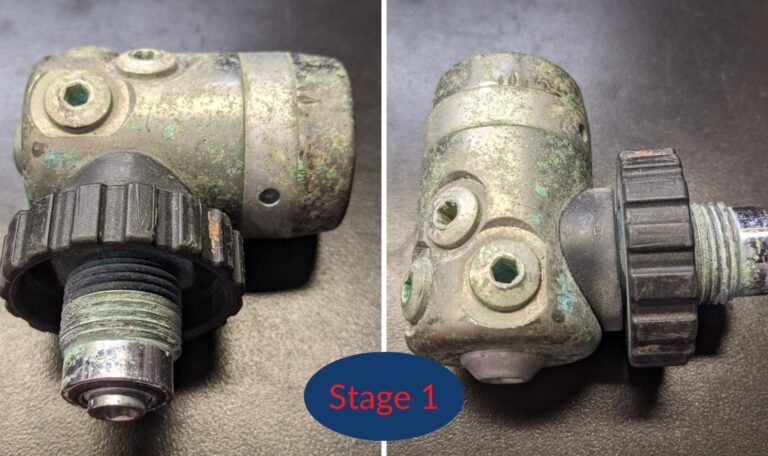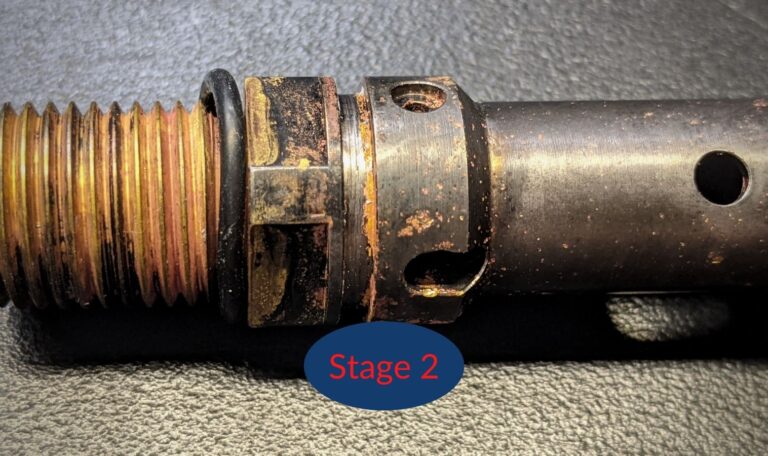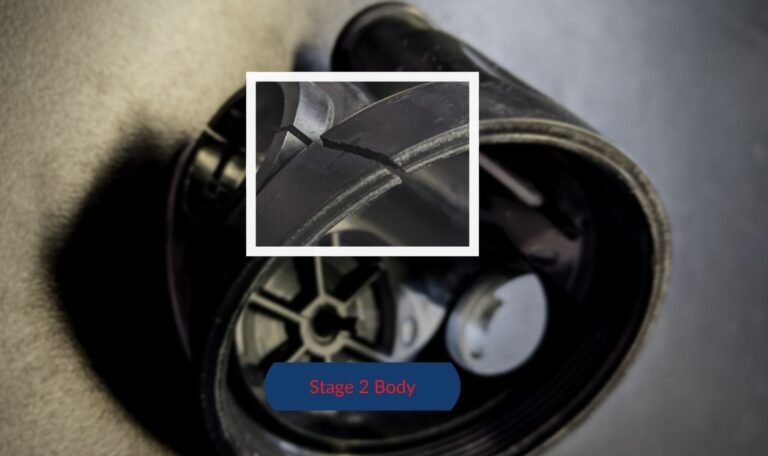Divers seem to come in three types:
Regulators are mechanical things, with moving parts, which may be controlled by springs, pneumatics, or a combination of both. These moving parts will eventually wear out and cause malfunctions.
For the purposes of this article, we will completely rule out actual physical damage caused by things like dropping, scratching, or smashing regulator components.

In theory, if you only ever dove in completely particle-free, freshwater, you would only need to service your regulator because o-rings and seats wear out. The timeline for that happening would depend on a couple of things.
All of these accelerate failure or simply make your regulators nasty. Once we add in saltwater, and the small particles (such as sand) found in the real places we dive, all of these things happen faster, and more dramatically. (We’ll address proper post-dive cleaning in another article.)
The manufacturer’s recommended service interval is intended to catch and fix these issues before they become detrimental to the regulator’s safe operation and reliability. These recommendations vary from manufacturer to manufacturer but mostly fall somewhere close to an annual cycle, or a cycle based on a number of dives, typically one year, or 100 dives.
What the recommendations typically don’t mention is that your regulator should also be serviced after you notice problems, after storage and periods of non-use, or after you can no longer get the “gritty” feeling to go away from the moving components.
A regulator is typically one of the more expensive pieces of SCUBA equipment. Most divers spend quite some time saving up (or paying off) a regulator purchase. Anything that can be done to increase the life span of something like this is typically appreciated.
The two big killers that shorten the lifespan of a regulator are corrosion and abrasion.
Abrasion is typically caused by sand and grit that gets into the regulator and is then ground back and forth by the action of breathing. This abrasion slowly removes the protective coatings and creates scratches on the sealing surfaces. Once the protective coatings are removed, corrosion happens much more quickly.
A side effect of the corrosion is the creation of more abrasive particles, thus accelerating the problem. The scratches prevent the o-ring and seals from seating properly and cause leaks, fizzes, and free-flows. This sort of damage shortens the lifespan of the regulator set. Regular service helps catch and stop these processes before they get too bad.

The damage above directly increases the cost of ownership. But let’s back up a step. Most good regulator brands offer a service parts replacement program.
Essentially a service parts replacement program usually provides free or low-cost service parts as long as the regulator is serviced according to the recommended schedule. This reduces the cost of a service by roughly 50% in most cases.
Going back to the damage caused in the sections above, most of the damage caused by corrosion and abrasion can be fixed. It just gets expensive replacing major components.
In many cases, the cost of the replacement parts gets high enough that it becomes uneconomical to do so. At this point, we are right back to saving for, or paying off, a new regulator.
I’m not sure about you, but I don’t like doing that too often. Regular service helps lengthen the time between buying new regulator sets.
Finally, a regulator without a good service schedule slowly becomes unreliable. Most of us have experienced the inconvenience of a free-flow when setting up our gear. These are frustrating at the local dive site, but even more so when out on a boat, at a distant site, or while on vacation.
If the condition of the regulator deteriorates far enough, it is possible for these kinds of problems to start occurring underwater.

Regular service helps keep your regulator a reliable piece of life support equipment.
The easy answer to this whole situation is to buy quality equipment in the first place plus having it serviced based on the manufacturer’s guidance. If you don’t know that what your manufacturer’s guidance is (and for some reason can’t find it in today’s age of information availability) I suggest the following:
Regulator service is at the same time very easy, and a very good idea for divers who simply want to enjoy diving instead of dealing with unreliable equipment. I’m not sure about you, but I took up diving for the fun of being underwater, not for the frustration of dealing with malfunctioning equipment.
*Always follow your manufacturer’s guidance in maintaining your equipment.
